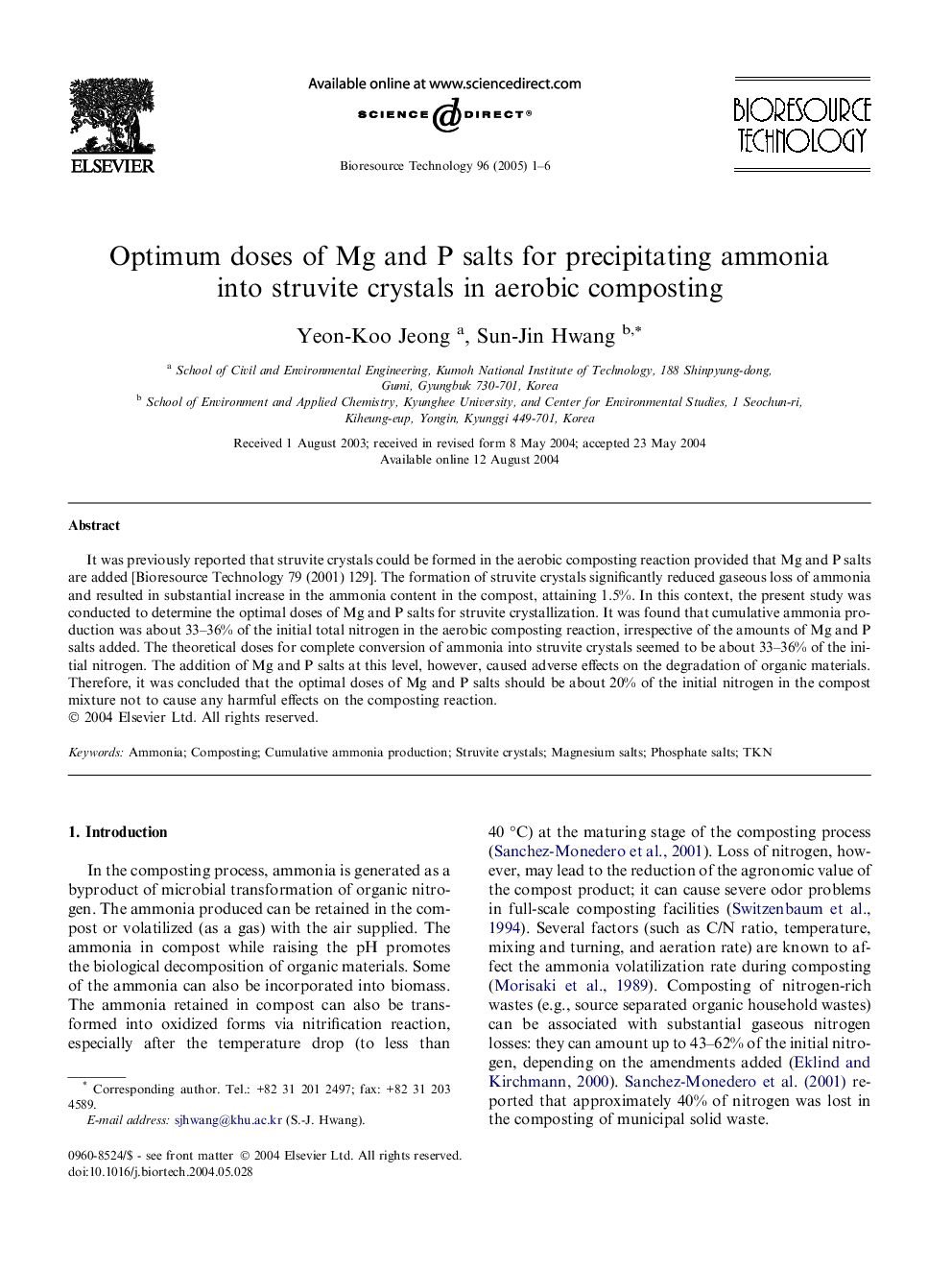| Article ID | Journal | Published Year | Pages | File Type |
|---|---|---|---|---|
| 10396303 | Bioresource Technology | 2005 | 6 Pages |
Abstract
It was previously reported that struvite crystals could be formed in the aerobic composting reaction provided that Mg and P salts are added [Bioresource Technology 79 (2001) 129]. The formation of struvite crystals significantly reduced gaseous loss of ammonia and resulted in substantial increase in the ammonia content in the compost, attaining 1.5%. In this context, the present study was conducted to determine the optimal doses of Mg and P salts for struvite crystallization. It was found that cumulative ammonia production was about 33-36% of the initial total nitrogen in the aerobic composting reaction, irrespective of the amounts of Mg and P salts added. The theoretical doses for complete conversion of ammonia into struvite crystals seemed to be about 33-36% of the initial nitrogen. The addition of Mg and P salts at this level, however, caused adverse effects on the degradation of organic materials. Therefore, it was concluded that the optimal doses of Mg and P salts should be about 20% of the initial nitrogen in the compost mixture not to cause any harmful effects on the composting reaction.
Related Topics
Physical Sciences and Engineering
Chemical Engineering
Process Chemistry and Technology
Authors
Yeon-Koo Jeong, Sun-Jin Hwang,
